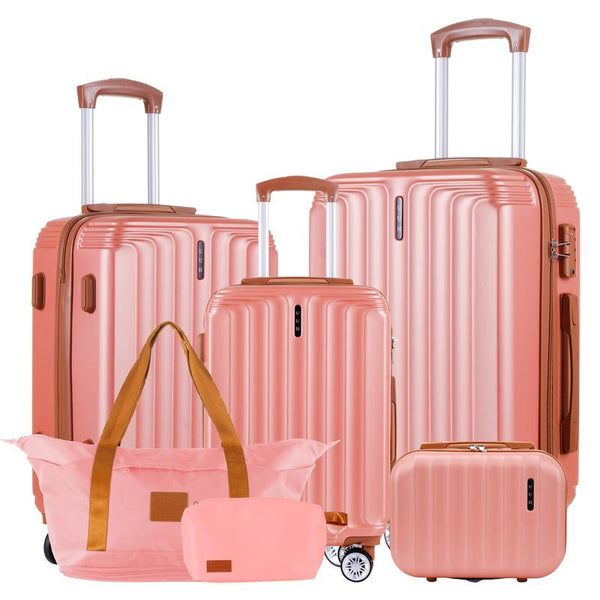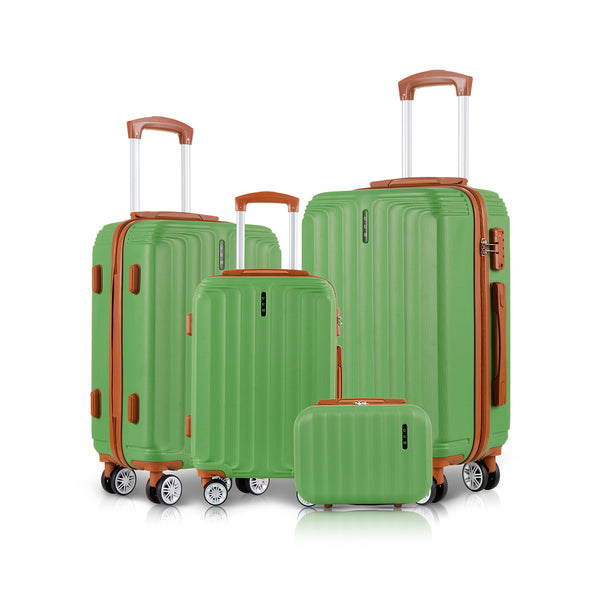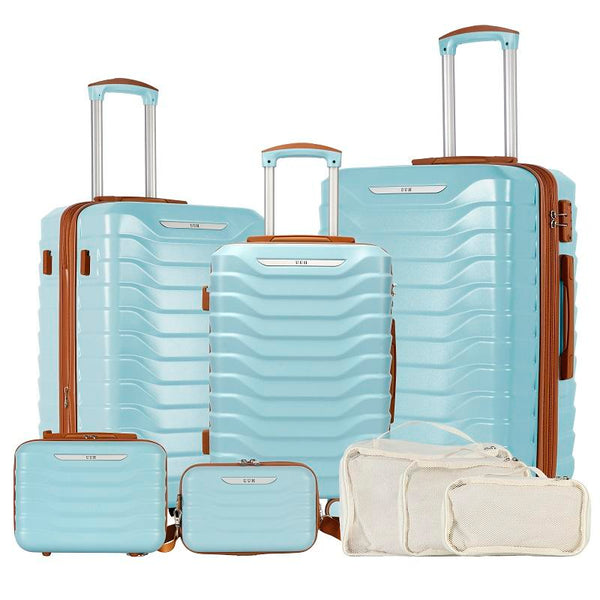What to Do if Your Luggage Smells Musty?
uuh admin
A suitcase should carry your memories, not musty smells. But let’s be honest—we've all faced it at some point. You unzip your luggage after a trip or a long period in storage and are immediately hit with an unpleasant, damp, almost moldy smell. So where does it come from, and more importantly, how can you get rid of it?
In this in-depth guide, we’ll cover every angle—from identifying the cause to restoring freshness—and even keeping your bags smelling great long-term. Let’s dive in and kick that stink to the curb.
Understanding the Musty Smell in Luggage
What Causes That Old, Musty Odor?
That smell isn’t just bad luck—it’s usually caused by mold, mildew, or bacteria growing in dark, damp places. Your suitcase might’ve been stored in a basement or closet with poor ventilation. Or maybe you packed something slightly damp—like a wet swimsuit, a used towel, or even dirty laundry. Moisture trapped inside the bag creates the perfect environment for odor-causing microbes.
Even if you think your suitcase was dry, materials like foam padding, fabric linings, and even paper tags inside can hold onto humidity. Over time, this builds up into that all-too-familiar musty funk.
Why Musty Smells Are More Than Just Annoying
Besides being unpleasant, musty odors can mean mold spores are present. These can cause allergic reactions, asthma symptoms, or sinus irritation—especially for sensitive individuals. Plus, they tend to transfer the smell to your clothes, shoes, and toiletries, which no one wants while traveling.
The First Step: Identify the Source
Is It the Fabric, Lining, or Contents?
Before diving into cleaning, take a close look—and smell—at your suitcase. Empty everything out. Sometimes, the source isn’t the bag itself but what's inside: an old sock, a forgotten toiletry, or even a plastic bag trapping air.
Hidden Moisture or Mildew Spots
Check crevices, under liners, and near seams. Mold and mildew can be sneaky, forming in areas that don’t get much airflow. Shine a flashlight into the corners. If you see black, green, or fuzzy white patches—yep, that’s mildew or mold. Don’t panic. It can be cleaned.
Quick Fixes You Can Try Immediately
Air It Out
Start with the simplest solution: fresh air. Open all zippers and compartments and place the luggage outside in a dry, sunny area. The UV rays in sunlight naturally kill bacteria and mold. If sun isn’t available, at least open the luggage in a well-ventilated area.
Let it sit for at least 4–6 hours. Longer is better if you have the time.
Use Baking Soda or Charcoal
Baking soda is a natural odor neutralizer. Sprinkle a generous amount inside the bag, close it, and let it sit overnight. Then vacuum or shake it out the next day.
Activated charcoal (or charcoal odor absorber bags) works even better for intense smells. These absorb not just the odor but the moisture too.
Dryer Sheets to the Rescue
Place 2–3 dryer sheets inside the compartments. Leave them overnight, or longer if needed. It’s not a deep clean, but it gives your bag a temporary pleasant scent.
Deep Cleaning Methods for Smelly Luggage
Vacuum the Interior Thoroughly
Before using any liquid cleaners, use a handheld vacuum to remove debris, crumbs, hair, or dust. Focus on seams and pockets. This step is essential—cleaning is more effective when you start with a debris-free surface.
Use Vinegar and Water Spray
Mix equal parts white vinegar and water in a spray bottle. Lightly mist the interior of the luggage and let it air dry in the sun or near a fan. Vinegar naturally kills mold and neutralizes odors.
Pro Tip: Add a few drops of essential oil like tea tree or lavender to mask the vinegar scent.
Try Enzyme-Based Cleaners
These are specially designed to break down organic material (like mold and bacteria). Use products labeled as “odor eliminators” or “pet stain cleaners.” Make sure they’re safe for fabrics.
Spray lightly, let it sit for 10–15 minutes, then wipe with a clean microfiber cloth.
Wipe Down the Exterior Too
Especially if your luggage has a fabric shell. Use a gentle soap and water mix for nylon or polyester bags. For hardshell suitcases, use a cloth dampened with mild soap water. Rinse with a separate cloth and dry thoroughly.
Natural Deodorizers That Actually Work
Essential Oils
Soak cotton balls in a few drops of essential oils and place them inside your luggage overnight. Lavender, eucalyptus, tea tree, and lemon are all excellent for deodorizing and even have antibacterial properties.
Coffee Grounds
Used coffee grounds are surprisingly good at absorbing odors. Put them in a breathable bag or old sock, seal it, and place it inside the luggage.

Lemon Peels and Citrus Power
Citrus peels help mask and absorb musty smells. They also have antifungal properties. Let the peels sit for a couple of days (then remove before they go bad).
Machine Washing: Yes or No?
When It’s Safe to Machine Wash
Some soft-sided luggage (like duffel bags or fabric totes) may be machine washable. Always check the care label or manufacturer’s site. If it's okay, use cold water and a gentle cycle, and hang to dry.
What to Avoid at All Costs
Do not machine wash hardshell luggage, anything with cardboard in the base, or bags with metal frames. Water can warp the structure and ruin the integrity of the bag.
Storage Tips to Prevent That Smell from Coming Back
Use Silica Gel Packs
These moisture-absorbing packets are lifesavers. Toss a few into your luggage when you store it. You can even buy larger versions made for closets or cars.
Keep It in a Dry, Ventilated Area
Avoid storing your luggage in damp basements or garages. If you must store it there, place it inside a breathable fabric bag and keep it elevated from the floor.
Rotate Usage if Possible
Bags that sit unused for years are more prone to developing smells. Rotate your luggage use and open it occasionally to let it breathe.
How Climate Affects Luggage Odor
Humid vs. Dry Climates
Live in Florida or Singapore? Your luggage needs extra love. Humid climates mean higher risk of mold and mildew. If you live in drier areas like Arizona, you’re less likely to have these issues—but still not immune.
Traveling Often? Moisture Follows You
Every beach trip or rainy vacation can leave your luggage vulnerable to moisture buildup. Be proactive and dry everything before packing.
How to Treat Leather vs. Fabric Luggage
Fabric Cleaning Dos and Don’ts
Use a mild soap, vinegar solution, or enzyme spray. Don’t oversaturate, and always test on a small area first. Let it dry fully.
Special Care for Leather Cases
Use a leather cleaner and conditioner. Avoid water or vinegar on leather—it can dry it out or cause damage. Treat the leather to preserve its look and smell.
Don’t Ignore the Zippers and Pockets
Odor Can Hide in Small Spaces
Smells like to hide in zippers, side compartments, and under flaps.
Q-Tips and Toothbrushes for Tight Spots
Use cotton swabs or a soft toothbrush dipped in vinegar solution to get into small crevices.
When to Replace Your Luggage
Knowing When It’s Beyond Saving
If mold keeps coming back or the smell just won’t go away after multiple deep cleans, it’s time to move on. Especially if the lining is deteriorating or there are water stains that won’t dry.
What to Look for in a Fresh Replacement
Choose moisture-resistant linings, antimicrobial protection, and breathable fabric. The UUH Luggage Sets, for instance, offer multi-piece sets that include a toiletry and cosmetic bag—perfect for keeping damp items separate.

UUH Pink Luggage with Lock Sets 4 Piece Suitcase Light Weight with Storage Bags

UUH Hard Luggage Sets 4 piece ABS Suitcase Bag Traveling(20inch,24inch,28inch)

UUH 5 Piece Luggage Set (8",14",20",24",28") Bags with 3 Storage and Makeup Bag
Using Luggage Fresheners and Odor Absorbers
DIY Freshener Bags
Mix dried herbs (lavender, rosemary) with baking soda in a breathable pouch. It’s natural, cheap, and works like a charm.
Commercial Products Worth Trying
Look for charcoal bags, moisture absorbers, and odor-neutralizing sprays. Brands like Moso Natural and DampRid are top-rated for travel gear.
How Often Should You Clean Your Luggage?
After Every Trip?
Give it a basic wipe and airing out after every trip, especially if you traveled in a wet climate.
Seasonal Deep Clean Guide
Every 3–6 months, do a full clean and odor check. Replace silica packs and check for any new smells or mold signs.
Best Practices for Keeping Luggage Fresh on the Go
Use Packing Cubes
Packing cubes separate clean from dirty clothes and help reduce moisture transfer between items.
Never Pack Damp Items
Always dry swimsuits, towels, or laundry before placing them in your suitcase—even if you're in a rush.
Conclusion
Musty luggage doesn’t have to ruin your travel vibes. Whether you're a frequent flyer or the occasional weekend warrior, knowing how to clean and prevent odors in your luggage gives you peace of mind (and better-smelling clothes). Keep moisture out, air your bags regularly, and use natural deodorizers to stay fresh on the road and at home.
FAQs
Can I use Febreze or fabric sprays in my luggage?
Yes, lightly. Just make sure the bag is fully dry after spraying, and don’t use it as a substitute for actual cleaning.
How long does it take to remove the musty smell?
Anywhere from a few hours to a few days depending on how bad it is and what method you use.
Is it safe to use bleach inside luggage?
No. Bleach can ruin the fabric, fade colors, and may even break down the material. Try vinegar or enzyme sprays instead.
Will UV light or sunlight kill the smell?
Yes. Sunlight is excellent for drying and disinfecting luggage. Just be cautious with colored fabric to avoid fading.
Can musty luggage affect my clothes?
Absolutely. Odors can cling to fabrics inside your suitcase and even transfer to fresh clothes. Clean before you pack!







